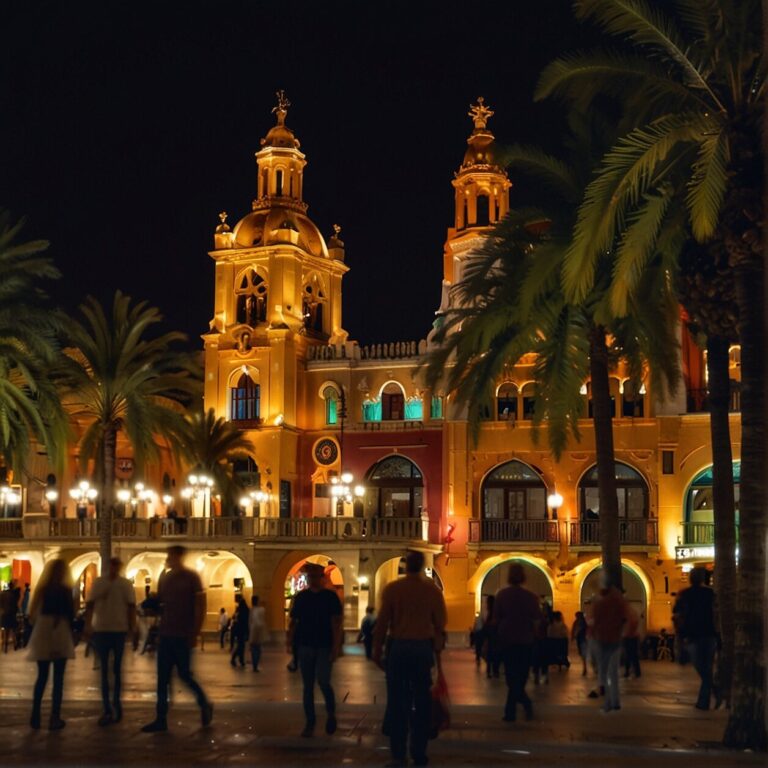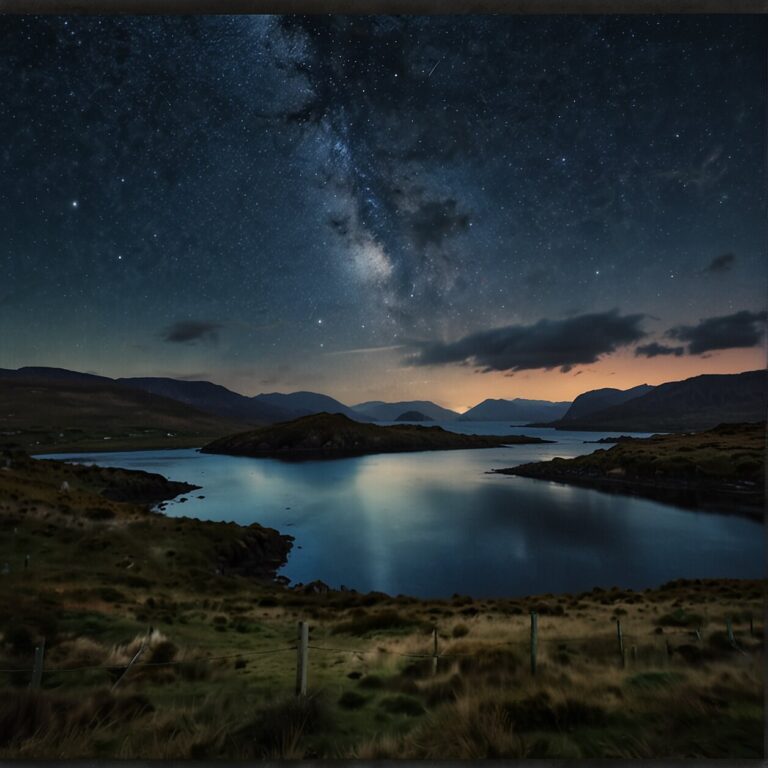Exploring the Hidden Corners of the Globe: The Rise of Virtual Tours
Imagine soaring over the touchable history of Rome, traversing the expansive icy tundra of Antarctica, or marveling at the sunkissed beaches of Hawaii – all without leaving the comforts of your home. This is no sci-fi tale of future travel, this is happening here and now. Welcome to the thrilling world of virtual tours.
These immersive experiences offer a lifeline to those wanderluster souls itching for an exploration spree. Not only do they adhere to travel restrictions implemented during uncertain periods, such as pandemics, but they also allow you to satiate your adventurous spirit from the comfort of your couch.
“Virtual tours are not about replacing the real thing. They are about enhancing our worldview, breaking the barriers of geographical limitation, and making travel a more inclusive experience for everyone.”
- Travel without borders across continents, oceans, and cultural boundaries – absorb rich experiences that are otherwise out of reach.
- You’ll reduce your carbon footprint dramatically – jetting off to exotic locations is exciting, but the environmental cost is considerable.
- The travel industry can benefit from diversifying with this evolving technology, adding another string to its bow and offsetting losses from physical travel.
- And last, but by no means least, there’s accessibility. Those unable to travel physically because of health or financial constraints can explore the world, too.
No, it’s not the same as being there physically but virtual tours come with their own unique set of benefits. Step into the new era of digital exploration and redefine the way you travel.
Travel Reimagined: Embracing the Digital Age
Emriching the travel experience was the focus of the second phase, which saw virtual technologies being embraced within various tourist attractions. From strolling through a historic site to diving deep into the ocean’s mysteries, it’s all now possible thanks to these tech-powered visits that are rapidly shaping the future of travel.
The growth trend of virtual tourism worldwide is undeniable; it’s gradually altering our perception of travel and adventure. This digital transformation is not just about recreation – it has the potential to transform the entire tourism and travel industry. Imagine discovering the world’s most iconic landmarks, exploring hidden caves far beneath the earth, or even walking on the moon – all without ever leaving your living room. Virtual tourism pulls this off by merging the thrilling aspects of tourism with the limitless capabilities of virtual reality (VR), providing an intense, immersive experience without the hassle of packing bags or booking flights.
Furthermore, the scope of virtual tourism isn’t restricted. It offers various levels of technological interactivity to suit everyone’s comfort. From interactive guided tours to virtual walks through scenic landscapes, it accommodates all degrees of tech-savviness. And, while virtual tourism does have its imperfections, like every other technology in development, its growth and uniqueness cannot be undermined. It proves to be an exciting and novel approach for travel enthusiasts to quench their curiosity and thirst for exploration.
Virtual tourism is a magnificent, unrestricted spectacle, bringing far-flung destinations and thrilling adventures to you. It serves as a fanfare of high-resolution views, where the magnificent Grand Canyon might be just a click away, or you could be exploring the intricate streets of Venice while sipping coffee on your couch. The digital age has indeed magnified our travel experiences, redefining adventure and exploration with the power of virtual reality!
Stepping into a New Reality: How Virtual Tours Mimic Real-life Adventure
Virtual tourism ushers you into a brave new world where you step into the shoes of an explorer without leaving the comfort of your home. Powering this innovation is an advanced mix of virtual reality technologies, including audio, video, images, and immersive presentations, coupled with engaging narration from expert guides.
Imagine standing at the foot of the colossal Eiffel Tower, feeling the grandeur of its metallic structure looming overhead, hearing the bustling sounds of Paris in the background. This is what a virtual tour offers, a near-exact replication of reality that mimics the thrill of real-life adventures.
These digital experiences are as diverse as they are immersive – you could find yourself roaming the enigmatic halls of the Louvre on Monday, witnessing the serene cherry blossoms in Japan on Wednesday, and marveling at the arid beauty of Egypt’s Pyramids on Friday. The boundaries of space and time that limit traditional travel no longer apply in the world of virtual tours.
These unprecedented tours employ VR experiences, an innovative facet of virtual tourism, that transport you into fully immersive, computer-generated environments. Here, you can explore your selected destinations as if you were physically there – looking around, walking about, and interacting with the environment in real-time.
Beyond standard VR, virtual tourism also includes thrilling videos, headset immersion, and convincing simulators. These forms of virtual tourism are perfected to deceive your senses into believing that you’ve been transported to a different corner of the world – right from the familiar corners of your own living room.
Offering global travel at your fingertips, virtual tours indeed herald a new age of adventure as you set out to explore the world in all its glory, untouched by travel restrictions and free to quench your wanderlust in the most mesmerizing of ways. Virtual tourism is not only a growing trend but serves as a lifeline for travel enthusiasts during uncertain times, connecting cultures and experiences on a global platform like never before.

The Environmental Impact: An Unexpected Benefit of Virtual Tours
Undeniably, one of the greatest benefits of embracing virtual tours is the substantial reduction in carbon footprint. When you embark on a virtual journey rather than physically hopping on a plane, train, or car, you’re not only sparing your wallet but also act significantly in favor of our ailing planet. The absence of transportation, the core component of traditional travel, in this new form of exploration leads directly to minimal to zero emission of greenhouse gases.
Think about it. Each time you wander through the pathways of a beautiful European town, or marvel at the surreal tranquility of an isolated beach in the South Pacific, or even scale the snowy peaks of the Himalayas through a screen, you’re contributing towards conservation. Not only are you avoiding unnecessary expenses, but you are also not contributing to the excessive pollution that is agonizing our planet.
Moreover, virtual tourism shields destinations from the negative effects of over-tourism by managing the influx of physical visitors, helping to preserve vulnerable habitats and historic sites. It also provides an alternative way for hotels, Convention and Visitors Bureaus (CVBs), and travel agencies to showcase their services without adding to the physical footprint of tourism.
Enduring Travel Restrictions: The Rise of Virtual Tourism
In 2020, the global tourism industry faced an unprecedented challenge with the onset of the COVID-19 pandemic, causing restrictions on travel and leading to a surge in the popularity of virtual tourism.
People turned to the digital world to satiate their wanderlust, triggering a significant expansion in the development and demand of virtual tourism. Despite the limitations such as lack of social interaction or less economic benefits compared to physical travel, the trend of virtual exploration, made possible through high-resolution views, continues to gain momentum across the globe.
Exploring Unchartered Territories: The Role of Virtual Tours
Virtual Tours serve a crucial role in today’s digital age, introducing us to a whole new way to travel and explore. During a time when physical traveling poses various challenges, virtual tours are changing the game by offering unique opportunities to explore and discover new places, right from the comfort of our homes.
At the of heart virtual tourism is an immersive technology that combines virtual reality software, audio, video, and images to create near-life touring experiences. This technology allows you to get up close with history, culture, and nature, epitomizing the adage ‘seeing is believing’.
Take, for instance needed! As we navigate these uncertain times, it’s important to remember how virtual tours have democratized travel, making uncharted territories accessible to any and all explorers.

Saving the Planet, One Tour at a Time: The Environmental Impact of Virtual Travels
Virtual tourism offers an incredible way to explore global destinations without leaving a carbon footprint. Indeed, the lack of physical travel eliminates CO2 emissions which are typically associated with flights, cruise ships, buses or cars. This benefit cannot be overstated as it directly contributes to the fight against climate change.
Furthermore, virtual tours are lowering the negative impacts on sensitive environments that conventional tourism often inflicts. An excellent example is the Great Barrier Reef, an ecological marvel victim to ocean acidification and increased tourism. Embracing virtual diving allows everyone to admire the reef’s majestic beauty without contributing to its degradation. Similarly, our globally treasured Amazon Rainforest can be explored, celebrating its rich biodiversity without endangering its delicate ecosystem.
However, while virtual tourism acts as a preservation tool for our planet, it is crucial to acknowledge that it may bring potential challenges to local economies highly reliant on tourism. Hence a balanced approach, promoting virtual tours without entirely discouraging physical travel, is key to ensuring a sustainable tourism industry.
Despite its potential drawbacks, virtual tourism should be perceived as contributing significantly towards environmental conservation in these uncertain times. Think about it: every virtual tour you embark on saves not only your time and money, but also the planet. It’s a win-win situation for your wanderlust soul and Mother Earth.
Keeping Cultural Experiences Alive: Virtual Tours for Education and Enlightenment
Imagine walking in Leonardo Da Vinci’s footsteps as you meander through the Louvre, or stepping into the startlingly vivid frescoes of the Sistine Chapel from your living room. With physical travel limited for many of us, virtual tours have become a cultural lifeline, keeping us connected to our shared global heritage and enabling us to delve into different societies and customs from the comfort of our homes.
Using a blend of high-resolution imagery, 360-degree video, informative narration, and interactive elements, virtual tours can offer an in-depth look into museums, art galleries, and historical sites. These virtual visits can be incredibly immersive, often guided by professionals who offer intriguing insights and stories that deepen the overall experience. They provide educational value, making them an ideal learning tool for both adults and children alike.
Many leading cultural institutions have embraced this digital revolution, enhancing their online offerings to broaden their reach and maintain engagement. For instance, iconic museums such as The British Museum in London and The Smithsonian in Washington D.C. have employed virtual technologies to create vivid, interactive exhibitions that can be experienced from anywhere in the world. These experiences inspire curiosity and a thirst for knowledge, transforming a seemingly passive activity into an active exploration of culture and history.
Beyond the opportunity to sate our wanderlust, virtual tours also offer a form of cognitive enrichment. They help us develop an understanding and appreciation of cultures different from our own, bridging gaps and cultivating empathy. A stroll through an ancient Mayan city or a wander amidst the bustling streets of Tokyo can be both educational and eye-opening, fostering a sense of global citizenship and promoting cultural exchange.
In an unpredictable world, virtual tourism serves as a beacon of resilience and innovation, providing everyone an opportunity to glean diverse cultural experiences without the need for physical travel. Despite the lack of touch and smell, the panoramic views, authentic sounds, and captivating narratives offered by virtual tours create a multi-sensory experience that allows us to embrace our thirst for discovery, education, and enlightenment.
FAQ’S
With a myriad of benefits and opportunities at your fingertips thanks to virtual tourism, you may have a few questions bubbling to the surface. Don’t worry; we’ve got your back! In this FAQ section, we’ll break down your most pressing inquiries to help you navigate your new adventures in this digital frontier. Let’s pull the lever and accelerate further into this intriguing realm.
How can virtual tours satisfy our desire for adventure?
Virtual tours, through the use of cutting-edge technology, can offer an immersion into a wide range of activities, locales, or destinations that can truly satiate your wanderlust. This is made possible by the careful blend of virtual reality software, audio, video, high-quality images, narration, interactive presentations, and the expertise of knowledgeable guides, creating an authentic touring experience.
Gone are the days when physical presence was required to feel the rush of adrenaline in a jungle safari or the calmness inside an ancient cathedral. From the comfort of your home, you can traverse through the serpentine passage of the Great Pyramid of Giza or stroll around the picturesque streets of Paris, and that too without any travel limitations.
No matter what kind of adventure you are seeking, be it the exploration of a historical monument, understanding a new culture, or simply enjoying a panoramic view of a scenic landscape, virtual tourism provides an array of choices. With the proliferation of Virtual Reality (VR) experiences, you’re not simply a spectator but an active participant in the exploration, carving out your journey in these computer-generated environs.
To put it briefly, virtual tours don’t just replicate real-life adventures, they allow you to create your own. So, whether you’re a seasoned traveler missing the thrill of a new journey, or someone who’s been longing to explore but limited by circumstances, virtual tourism offers a novel and exciting way to quench your thirst for adventure.
What equipment do I need to enjoy a virtual tour?
As the shift towards a more digital paradigm takes shape, virtual tours have stepped in to fulfill our wanderlust, all from the comfort of our living rooms. Now, it’s entirely possible to roam the halls of the Louvre, trek through the Amazon rainforest, or stride around the ancient city of Petra, all without booking a flight ticket or even leaving your cozy couch. With the technological evolution, virtual reality has bcome a revolutionary tool in the tourism industry, offering a lifeline for those craving for new experiences and far-flung exploration amid travel restrictions. But as every emerging trend, virtual tours bring their own unique set of benefits and challenges. Hence, before you strap on your VR headset and set off on your digital adventure, let’s dive into the immense possibilities that virtual tours have to offer and how to best leverage them in this current climate.
- Convenience: Explore some of the world’s most coveted and exotic locations without the hassle of fixing itineraries, booking tickets or navigating through foreign territories.
- Accessibility: Virtual tours are available to anyone with an internet connection which makes it more inclusive, allowing those with physical restrictions or simply unable to travel a chance to experience different cultures and locations.
- Environmental Impact: Opting for a virtual trip significantly cuts down on carbon emissions usually caused by traditional forms of travel.
- Opportunity for Self-Guided Learning: Most virtual tours come packed with useful information and history about the location, offering a self-paced and immersive educational journey.
“Virtual tours are not just becoming a trend, it’s a bread-and-butter technology that takes you to impossible reaches of the world, offering a stirring, real-as-life virtual experience. They have the potential to redefine our understanding of travel and adventure.”
Through the following sections, we’ll dive deeper into these advantages and explore how virtual tours serve as a viable tool to quench our thirst for travel and adventure during these uncertain times. So, strap on your digital boots and let’s embark on this exciting voyage.
What types of locations can be explored through virtual tours?
Expanding the horizons of explorability, virtual tours now cover a thrillingly wide range of locations; places that one could only dream of visiting or may be physically inaccessible. Among these include majestic natural landscapes, cosmopolitan cities, historical sites, and even outer space destinations.
A wide-ranging catalog of virtual tourism features breathtaking natural wonders like Mount Everest, where you experience an aerial view from a helicopter without the actual challenges of a high-altitude climb. On the other hand, if the historical architecture mesmerizes you, then touring the Great Wall of China, a UNESCO World Heritage site, from the comfort of your couch, could be your go-to option.
Virtual tours also unlock directional doors to cityscapes and exotic locations across the globe. If you’ve always fantasized about witnessing the Eiffel Tower up close or strolling the Louve Museum in Paris, virtual tourism makes it a reality without any passport or flight ticket hassles.
Interestingly, these virtual escapades are not confined to our planet. Firing up our imagination, they extend to otherworldly trips too. For instance, a tour of planet Mars becomes a viable option, providing a remarkable perspective on our cosmic neighborhood.
Beyond these, if you’re planning to book a rental property for your next vacation or decide on a new living space, interactive 360 virtual tours offer a comprehensive visual insight, taking you through each nook and corner of the property.
Moreover, with the emergence of virtual event centers and digitized recreations of iconic landmarks, you can attend globe-spanning events or stand at the pinnacle of historical monuments within a few clicks.
In essence, virtual tours eliminate locational constraints, casting open a myriad of exploration possibilities for any would-be adventurer.
Do virtual tours provide the same cultural experience as physical travel?
Absolutely, understanding the depth of this question is crucial as it helps us benchmark virtual tours against real-world traveling. Let’s clarify that while virtual tourism can’t mirror the tactile and physical aspects of an on-location experience, it does offer significant cultural explorations that rival those offered by traditional travel.
Immersive Storytelling: With the help of technology, virtual tourism surpasses traditional photo slideshows or video playbacks. It uses virtual reality software, audio, video, images, narration, and interactive presentations, often guided by knowledgeable hosts, to create near-life touring experiences. For instance, you might find yourself walking through the bustling bazaars of Morocco, guided by a local showing you traditional crafts, vibrant spices and explaining the significance of the items to the Moroccan culture.
Cultural Accessibility: Certain regions may be physically hard-to-reach or inaccessible to some individuals due to health, affordability or other constraints. Virtual tourism eliminates such barriers and extends its arms welcoming all curious minds. It enables people around the world to learn, explore and absorb different and enriching cultural experiences that they might have otherwise missed out on.
However, there’s a transparent honesty we should embrace: A virtual tour may not always capture all cultural nuances as exact as a physical visit. Some interactions, natural interplays, or rare sights might still remain exclusive to in-person experiences due to technical limitations such as pre-recorded videos or live streaming.
But with rapidly evolving technology, we envisage a reality where virtual tours wouldn’t just emulate, but also expand upon real-life travel experiences. The inherent versatility, inclusivity, and adaptability of virtual tourism makes it a strong contender in the realm of modern-day exploration. In essence, while the physical experience varies, a virtual visit certainly provides a rich cultural understanding that matches, if not exceeds, traditional travel experiences.







